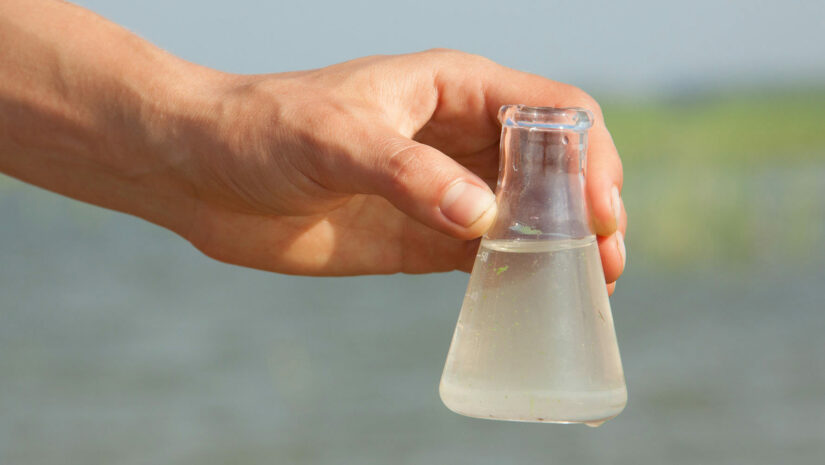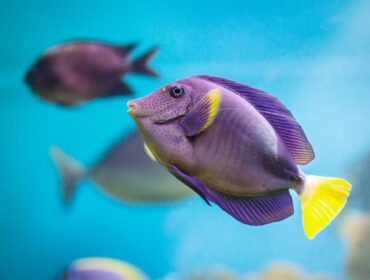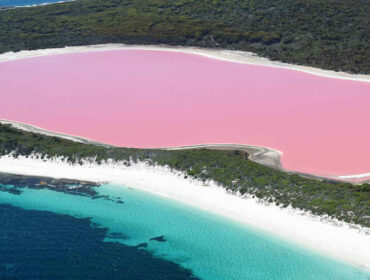If you ever find yourself stranded on an island or out in the wilderness with no fresh drinking water, knowing how to purify salt water in the wild can mean the difference between life and death. After all, you can be a diehard outdoor enthusiast and still be in danger if you don’t have access to clean water.
The majority of the water that you’ll find in the wilderness is salty, and these tips for desalination and purification will allow you to fight the risk of dehydration until you’ve reached safety. Learn how to purify water in the wild and not risk dehydration.
Why can’t you drink salt water?
There are many reasons not to drink salt water, including:
- The human kidney cannot eliminate large quantities of salt. This means you need to create more urine and you can become very dehydrated.
- Too much salt causes blood pressure to rise and this can lead to organ failure.
- The kidneys become overworked trying to excrete the extra salt.
- You may experience muscle cramps from drinking salt water.
Tips for Purifying Salt Water in the Wild
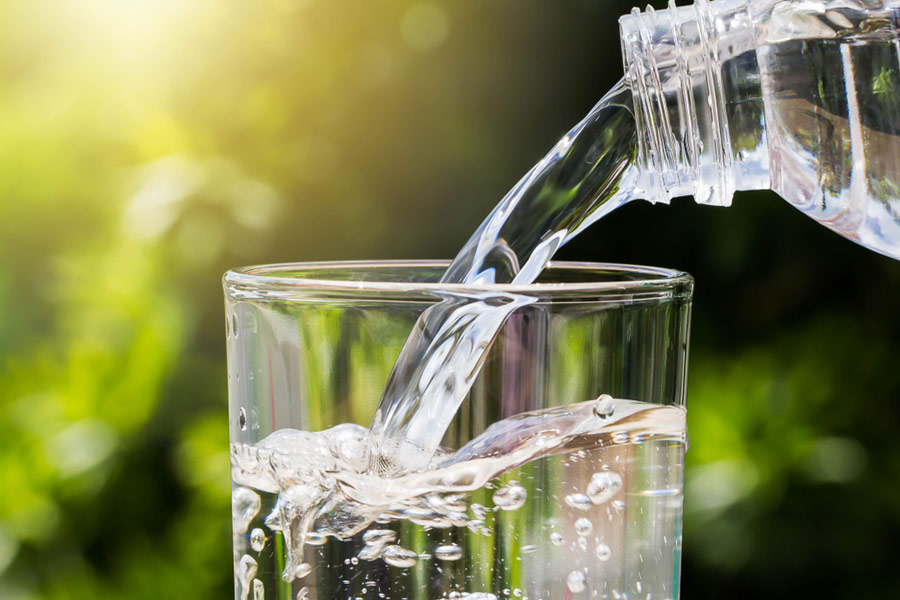
Turning seawater into safe drinking water is not as hard as it seems. With enough patience and determination, these desalination methods will be easy enough to follow when you’re a long way from civilization.
Understand the process
Survival water purification involves a challenging desalination method: distillation by evaporation. The idea is that by evaporating water, salt and other particles are separated to make it completely safe to drink. Of course, this also means you’ll also need heat and some sort of entrapment to create condensation.
Determine your method
There are two common methods to distill water through evaporation:
Solar Still
With a solar still, you use the natural energy of the sun to purify water in the wild. The most basic way to create a solar still is to simply dig a hole in the ground, add in some vegetation for that extra moisture, pour in your saltwater, leave your catch cup or bowl in the middle, and securely cover the hole with a large plastic.
Larger solar stills make use of more sophisticated and carefully constructed entrapments. To get an idea about how a solar still is made and works, check out the tutorial video below:
Distillation by Boiling
This method can provide you with more drinkable water than a solar still, but it does require a lot of external heat energy. It’s similar to alcohol distillation, which was historically composed of a closed container, condenser, and another container that received the condensed liquid.
The closed container is heated to boil saltwater inside and the water vapor travels through the condenser or cooling tube, where it changes back to water that will then be free of salt and other particles. Check out this video demonstration of the method, done solely with materials found outdoors:
Get some salt water
When you get your salt water, it helps to go past shallow waters where you’re less likely to include sand, stones, and other solid particles in your gathered water. This helps make the next step quicker and easier.
Filter your salt water
The first step of the purification process can be filtration. It’s important that you filter your water before boiling as the bacteria and viruses (covered in dust and sand) will not be killed.
You can use any piece of cloth—even the shirt on your back—or a non-poisonous grass mesh to slowly filter solid particles from your salt water. Catch the filtered water with a plastic bottle so you can better see if there are improvements in the clarity of your water. If the water is still not clear after the first try, do it again or thicken the cloth layer. Take your time.
Set up your distillation equipment
Once solids are filtered out, you can finally set up your distillation equipment. This, of course, will depend on your chosen method.
For the solar still, you’ll need:
- a big layer of plastic
- a dug-up hole on the ground
- some vegetation
- saltwater
For distillation by boiling, you’ll need three basic components:
- Clay, glass, or metal container that can hold your saltwater and handle extreme heat
- Condenser or cooling tube
- Catchment system or container for your condensate
Remember to seal any openings or holes where the water vapor can escape. This way, you can collect as much purified water as you can. For the second method, make sure that the tube stays cool towards the end to facilitate the condensation. Some do this by lengthening or surrounding the tube with cool water.
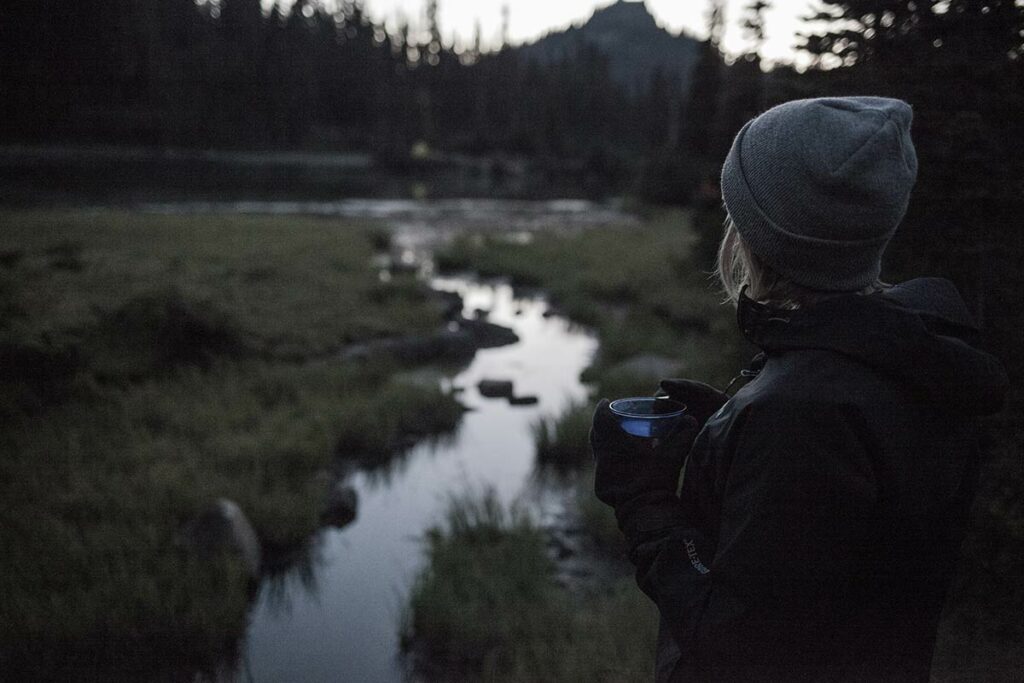
Disinfect your water
Once you’ve removed the salt from your water, you’ll need to make sure that it’s safe for drinking—especially if you’re not sure about your water source and whether or not it is polluted. Here are the best purifying techniques you can follow to make sure that the water is safe to drink:
Boiling
Boiling, which is already done during distillation with the use of a strong external heat source, is the simplest and most convenient water purification method. Just let the bubbling happen for five minutes or more and the water will be good to be taken off the heat and cooled down for safe drinking.
Filtration Pumps
Purification systems like filtration pumps force water to pass through different combinations of charcoal and ceramic filters. The water is then treated with chemicals to make it potable. Some of these filtration pumps are portable and can be found in camping or outdoor adventure stores.
Purification Tablets
You can find purification tablets everywhere, including drug stores. They’re small, cheap, efficient, and very convenient as you only have to drop it in the water. The dosage depends on how much water you are treating and how contaminated it is.
Drink away!
As soon as you are able to produce clean water, go ahead and quench your thirst! Dehydration is your worst enemy when you’re trying to survive in the great outdoors, so enjoy the fruit of your labor.
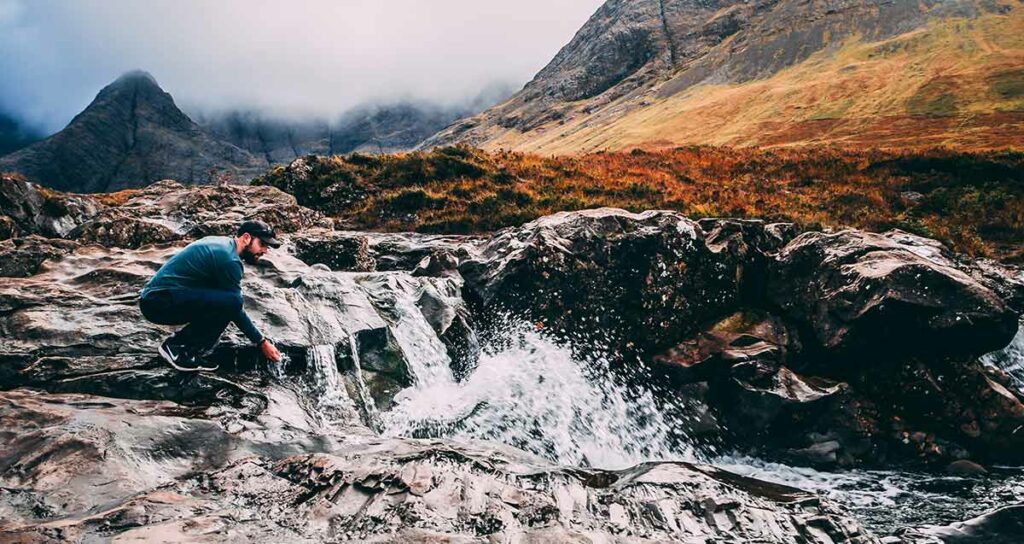
How to Purify Water in the Wild: Frequently Asked Questions
The most efficient way to desalinate salt water is by using a method called distillation. This is where you boil the water and then collect the condensation. The condensation will provide fresh saltless water for you to drink. If you cannot boil the water, you can leave it in the sun and wait for the water to evaporate, and catch the condensation that way.
The easiest way to purify salt water in the wild is with a solar still. This is where the natural energy of the sun is used to purify water. You dig a hole in the ground and add in some vegetation for extra moisture, pour your saltwater in, leave your catch cup or bowl in the middle, and securely cover the hole with a large plastic.
Yes, you can drink rainwater, but it’s important to consider its quality. Rainwater is generally safe to drink if collected in clean containers and in areas with minimal pollution. However, it’s recommended to filter or purify rainwater before consumption to remove any potential contaminants or pollutants.
In survival situations, you can boil water in various containers. Ideal options include a metal pot or canteen. Avoid using containers made of materials that can melt or release harmful chemicals when exposed to heat. Improvising with natural materials like rocks or hollowed-out logs is also possible.

